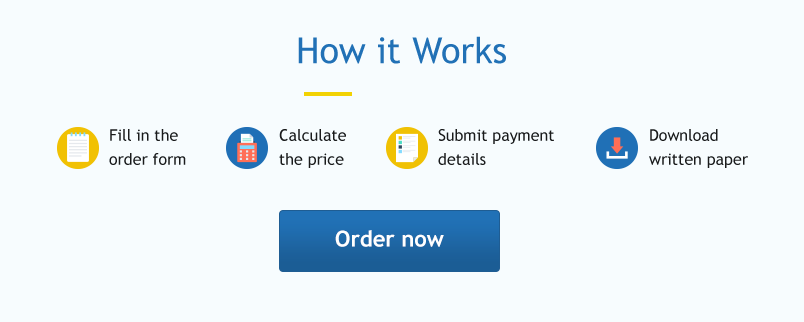
Achieving clarity in academic writing remains a major challenge for students and researchers. Let’s face it—complex ideas deserve clear expression, not complicated language. This guide will help you bring transparency to your academic papers without sacrificing depth.
Common Clarity Pitfalls
Ever found yourself lost in a sea of academic jargon? You’re not alone. Let’s identify the traps that make papers needlessly complex.
Jargon overload happens when specialized terms fill every sentence. While technical vocabulary has its place, too much creates barriers. Think about your reader before dropping field-specific terms.
Long sentences confuse readers fast. Your brilliant analysis loses impact when buried in a 50-word sentence. Break those complex thoughts into smaller chunks.
Abstract language disconnects readers from your ideas. Vague phrases like “various factors” or “certain elements” leave readers guessing. Be specific about what you mean.
Excessive passive voice creates unnecessarily complicated structures. “It was determined that” adds words without adding clarity. Active voice brings directness to your writing.
Poor paragraph organization creates mental roadblocks. When paragraphs lack clear topic sentences or jump between ideas, your reasoning becomes difficult to follow.
Common clarity obstacles include:
- Turning verbs into nouns (nominalizations)
- Cramming too many clauses into one sentence
- Introducing concepts without proper explanation
- Using complex vocabulary when simpler words work better
- Leaving abbreviations and acronyms undefined
Remember, clarity isn’t about “dumbing down” your ideas. It’s about respecting your readers’ time and mental energy.
Structuring Arguments for Readability
How you organize your paper significantly impacts its clarity. A well-structured paper guides readers through complex ideas without mental gymnastics.
Thesis Statements
A clear thesis statement anchors your entire paper. This single sentence explains your main argument and provides a roadmap. Place it near the end of your introduction.
Strong thesis statements make specific claims rather than general observations:
Weak: “This paper explores various aspects of climate policy.” Strong: “This paper demonstrates how carbon pricing mechanisms outperform regulatory approaches in reducing industrial emissions while supporting economic growth.”
The first leaves readers wondering about your actual position. The second establishes a clear argument that your paper will support.
Always revisit your thesis after drafting. Does your conclusion match your opening promise? Refine your thesis to accurately reflect where your paper ends up.
Logical Flow
Each paragraph should connect clearly to those before and after it. This progression creates a pathway through your argument.
Start with a solid outline before writing. Map the logical steps needed to move from thesis to conclusion. Look for potential gaps that might confuse readers.
Consider what your readers already know when organizing your arguments. Introduce basic concepts before building toward more complex ideas. This approach helps readers follow your reasoning.
Clearly mark major transitions between sections. Help readers understand how each new section advances your overall argument. This mental roadmap prevents confusion.
Review your draft specifically for logical flow. Cut sections that wander from your main argument, even if they seem interesting. Every paragraph should support your thesis.
Signposting & Transitional Phrases
Good transitions guide readers through your thinking process. They work like road signs, showing relationships between ideas.
Signal new points with clear phrases. Words like “First,” “Additionally,” and “In contrast” help readers anticipate what’s coming next. These signposts reduce mental effort.
Show connections between paragraphs explicitly. Link new information to points you’ve already established. This creates continuity throughout your paper.
Useful transitional phrases include:
- To show addition: “Furthermore,” “Moreover,” “Additionally”
- To show contrast: “However,” “Conversely,” “On the other hand”
- To show causality: “Therefore,” “As a result,” “Consequently”
- To provide examples: “For instance,” “Specifically,” “To illustrate”
- To conclude: “In conclusion,” “Ultimately,” “In summary”
Don’t overuse any single transition. Mix different transitional expressions to keep your writing engaging.
Sometimes your paragraph structure itself creates transition. A well-crafted topic sentence can reference the previous paragraph while introducing a new idea. This technique creates smooth flow.
Remember that transitions serve clarity, not decoration. Each should clearly show the logical relationship between ideas. Avoid transitions that create false connections.
Editing Techniques for Precision
Thorough editing transforms decent academic writing into exceptionally clear work. Develop systematic approaches to refine your drafts.
Read your work aloud to catch awkward phrasing. Your ears often catch problems your eyes miss. Unclear sentences typically sound confusing when spoken.
Try the “reverse outline” technique after drafting. Note the main point of each paragraph, then review these points for logical progression. This reveals structural weaknesses.
Challenge every noun-heavy sentence. Nominalizations often hide action and create wordiness. Change “The implementation of the procedure was performed” to “We implemented the procedure.”
Mix up your sentence lengths. Alternate between longer, more complex sentences and shorter, direct ones. This creates rhythm while preventing mental overload.
Cut redundancies ruthlessly. Academic writing often contains phrases that repeat meaning, like “basic fundamentals” or “future plans.” Choose the strongest term and delete the rest.
Active vs. Passive Voice
Active voice brings clarity and directness to academic writing. Compare these examples:
Passive: “The data was analyzed using statistical methods.” Active: “We analyzed the data using statistical methods.”
The active version clearly shows who did what. It uses fewer words while giving the same information.
However, strategic passive voice serves specific purposes. Use passive when:
- The actor is unknown or irrelevant: “The samples were contaminated during transit.”
- You want to emphasize who received the action: “Minority populations were disproportionately affected by the policy.”
- Discussing methodology where conventions favor passive voice: “Participants were randomly assigned to treatment groups.”
Most academic papers benefit from mostly active voice with occasional passive constructions. This balance maintains clarity while following academic conventions.
During editing, circle every “was” and “were” in your draft. Each represents a potential passive construction. Consider whether active voice would improve clarity.
Before & After Examples
Nothing shows clarity principles better than direct comparisons. Let’s look at several before-and-after examples.
Before: “The implementation of the methodology that was utilized in the experimental procedure was found to be characterized by significant limitations that potentially impacted the validity of the resultant data.”
After: “Our experimental methodology had significant limitations that potentially compromised our data’s validity.”
The revised version cuts word count by 60% while increasing clarity. It uses active voice and eliminates unnecessary nominalizations.
Before: “In light of the aforementioned considerations, it can be reasonably posited that the theoretical framework presented herein constitutes a viable alternative to existing paradigms in the field.”
After: “This theoretical framework offers a viable alternative to existing models in the field.”
Again, the revision dramatically improves readability. It removes pretentious language while keeping the essential meaning.
Before: “The data, which was collected over a six-month period through surveys distributed to participants recruited from various demographic categories, indicated several noteworthy trends relating to consumer behavior patterns.”
After: “Our six-month survey of diverse demographic groups revealed several noteworthy consumer behavior trends.”
The revision consolidates information into a clearer, more direct statement. It removes nested clauses that interrupted the main point.
These transformations show that clarity comes from deliberate editing choices. Precision requires cutting anything that doesn’t directly serve your meaning.
FAQs About Clarity in Academic Writing
How do I know if my writing is too complex?
Several signs suggest your writing might be overcomplicated:
- Friends or professors consistently ask you to clarify what you meant
- Your sentences regularly exceed 25 words
- You struggle to explain your points verbally in simple terms
- Your paragraphs frequently take up half a page or more
- You use specialized terms without defining them
Try the “explain to a friend” test. Attempt to explain your paper’s main points to someone outside your field. If you can’t translate your ideas into everyday language, you probably need to clarify your thinking.
The Hemingway Editor can help spot overly complex sentences and passive voice. While not designed specifically for academic papers, it gives useful feedback on readability issues.
Are there tools to detect jargon?
Several digital tools can help identify potential jargon:
The De-Jargonizer specifically targets scientific writing. It categorizes words as common, uncommon, or jargon based on how frequently they appear in everyday language.
Microsoft Word’s readability statistics provide useful metrics like the Flesch Reading Ease score. Lower scores indicate more complex language that might include excessive jargon.
Grammarly’s clarity suggestions often flag specialized terminology that might confuse general readers.
However, remember that appropriate terminology isn’t always jargon. Field-specific terms that precisely communicate concepts to your intended audience help clarity rather than hinder it.
What’s the role of peer feedback?
Peer feedback provides crucial perspective on your writing’s clarity. As a writer, you often can’t judge your own work objectively after spending hours immersed in it.
Seek diverse reviewers when possible. Classmates in your field can assess technical accuracy, while readers from other disciplines can identify unexplained jargon or assumptions.
Be specific when asking for feedback. Ask reviewers to mark sentences they needed to read twice, concepts that need more explanation, or transitions that seem abrupt.
Consider using a structured peer review process based on the American Psychological Association’s guidelines. Their framework helps reviewers provide targeted feedback on clarity issues.
Remember that disagreement among reviewers often signals clarity problems. When multiple readers interpret your writing differently, you’ve likely been less precise than you thought.
Need Help With Your Academic Papers?
Struggling to bring clarity to your complex academic assignments? You’re not alone. At Informativepapers.com, we specialize in helping students master clarity in academic writing.
Our expert team can:
- Review your papers for clarity issues
- Provide personalized editing feedback
- Offer one-on-one coaching on academic writing techniques
- Help you develop clear thesis statements and logical arguments
Don’t let unclear writing stand between you and academic success. Visit Informativepapers.com today or contact us at [email protected] to learn how we can help transform your academic writing.
Conclusion
Clarity in academic writing doesn’t happen by accident. It results from deliberate choices throughout your writing process.
Start with clear thinking. Foggy writing typically reflects foggy thinking. Clarify your own understanding before trying to communicate to others.
Build logical structures that guide readers smoothly through complex ideas. Use transitions and signposts to illuminate relationships between concepts.
Edit ruthlessly for precision. Cut unnecessary words, replace passive constructions, and simplify complex sentences without simplifying your ideas.
Remember that clarity serves your academic purpose. Clear writing ensures your arguments reach your audience and contribute meaningfully to classroom discussions or academic discourse.
By using these strategies consistently, you’ll develop the valuable skill of making complex ideas accessible without sacrificing intellectual depth. Your readers—and your grades—will thank you.



 April 24th, 2025
April 24th, 2025  admin
admin
 Posted in
Posted in 